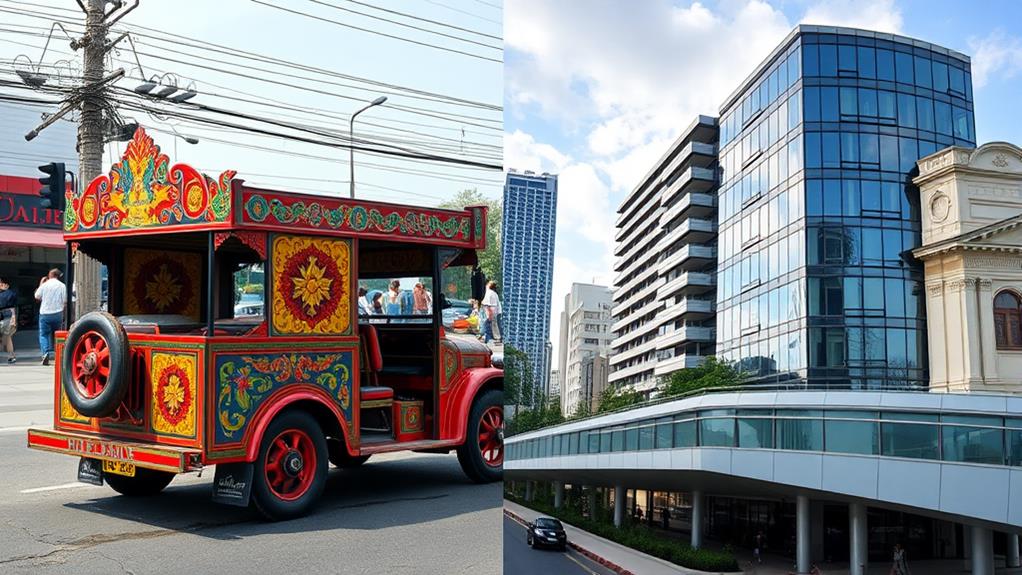Tagalog is a regional language spoken in specific provinces in the Philippines, whereas Filipino is the standardized national language used in urban areas. This fundamental difference in scope influences their vocabulary and alphabet.
Filipino has a broader vocabulary, incorporating words from various languages such as Spanish, English, and Chinese. In contrast, Tagalog maintains a traditional lexicon, sticking to its native roots. For instance, Filipino uses words like "kompyuter" (computer) and "telepono" (telephone), borrowed from English and Spanish, respectively. Tagalog, on the other hand, uses native words like "bahay" (house) and "araw" (day).
The Filipino alphabet consists of 28 letters, including additional letters like "c" and "f" adopted from other languages.
Tagalog's alphabet has 20 letters, which are sufficient for its native vocabulary.
Understanding these distinctions is crucial to appreciating the unique characteristics, usage patterns, and significance of Tagalog and Filipino in the Philippines.
Historical Context of Tagalog

Tagalog's Rise to Prominence
In 1937, President Manuel L. Quezon declared Tagalog the basis for the national language of the Philippines, marking a significant milestone in the language's history. At that time, only around 25% of the population spoke Tagalog.
However, its usage increased dramatically throughout the 1970s, with over half of Filipinos communicating in Tagalog by that time.
Renaming and Recognition
In 1959, the language was renamed Pilipino as part of efforts to create a national language that could represent various Philippine languages.
The 1972 Constitution recognized both Pilipino and English as the official languages of the Philippines.
Understanding Tagalog's Historical Context
Tagalog's evolution is deeply rooted in the country's history and constitution.
Its development has been shaped by the country's quest for a unifying national language.
Understanding Tagalog's historical context is crucial in appreciating its significance as a spoken language in the Philippines and its role in the evolution of the Filipino language.
Evolution of the Filipino Language
Tagalog's Rise to Prominence Led to the Evolution of the Filipino Language
In 1937, President Manuel L. Quezon declared Tagalog as the basis for the national language, paving the way for its development. This decision marked the beginning of Tagalog's transformation into a more inclusive language.
The Emergence of Pilipino
By 1959, Tagalog was renamed Pilipino, reflecting its growth and incorporation of words from other Philippine languages and foreign influences. This change acknowledged the language's expansion beyond its Tagalog roots, incorporating vocabulary from other languages.
The Official Recognition of Filipino
The 1972 Constitution solidified Pilipino and English as the official languages, further promoting the evolution of Filipino.
In 1986, the post-EDSA Constitution officially recognized Filipino as the national language, cementing its status and evolution from its Tagalog roots.
The Ongoing Evolution of Filipino
Today, Filipino continues to evolve by incorporating modern vocabulary and expressions from various languages, including English and Spanish, while maintaining its connection to Tagalog.
This dynamic language has come a long way, showcasing the country's cultural diversity and linguistic richness.
Key Differences and Characteristics

Tagalog and Filipino are two distinct languages with unique characteristics.
Tagalog is a regional language predominantly spoken in specific provinces, whereas Filipino is a standardized national language used primarily in urban areas like Metro Manila.
Filipino has a more extensive vocabulary, incorporating words from various Philippine languages, English, and Spanish. In contrast, Tagalog maintains a more traditional lexicon.
The alphabets of the two languages also differ. The Filipino alphabet consists of 28 letters, including additional letters from Western languages, whereas Tagalog's alphabet consists of 20 letters.
Filipino is designed to be more inclusive and adaptable, reflecting contemporary language use. On the other hand, Tagalog is often seen as more formal and literary.
Notably, approximately 80-90% of Filipino speakers are Tagalog speakers, indicating a strong linguistic overlap.
Filipino allows for transliteration to accommodate local pronunciation variations.
Language Usage and Significance
Language Usage and Significance in the Philippines
Tagalog and Filipino Serve Distinct Purposes
Tagalog and Filipino have different usage patterns in the Philippines. Filipino is predominantly used in urban centers like Metro Manila, whereas Tagalog is primarily used in specific regions such as Central Luzon and Southern Luzon.
Language Usage Patterns
| Language | Usage Pattern |
|---|---|
| Tagalog | Primarily used in specific regions (Central Luzon, Southern Luzon) for formal documents and literature |
| Filipino | Predominantly used in urban centers (Metro Manila) for everyday conversations and informal settings |
Key Characteristics
Tagalog is a static form, often viewed as a literary language, whereas Filipino is a dynamic language, adaptable to modern usage and mass media influence. Notably, approximately 80-90% of Filipino speakers are also Tagalog speakers, highlighting mutual intelligibility.
Significance of Both Languages
Filipino has a broader lexicon, incorporating words from various Philippine languages and foreign languages, making it more inclusive than Tagalog. This dynamic language is more commonly spoken in everyday conversations, while Tagalog is typically used for formal documents and literature. Understanding these language usage patterns can help appreciate the significance of both Tagalog and Filipino in the Philippines.
How Does Tagalog’s Influence on Filipino Culture Highlight Their Differences?
Tagalog’s cultural impact underscores the diversity within Filipino society by serving as a bridge between regional dialects and national identity. While it shapes traditions, language, and arts, it also highlights the distinct characteristics of other cultures in the Philippines, fostering both unity and an appreciation for regional differences.
Debunking Common Misconceptions

Tagalog and Filipino aren't interchangeable terms. Tagalog is a regional language primarily spoken in specific provinces, whereas Filipino is the standardized national language of the Philippines. This distinction is often misunderstood because Filipino was established as an evolution of Tagalog, integrating vocabulary and expressions from various Philippine languages and foreign influences.
The Filipino alphabet is distinct from the Tagalog alphabet. The Filipino alphabet includes 28 letters, incorporating additional Western letters like j, c, x, z, and f. In contrast, the traditional Tagalog alphabet consists of only 20 letters.
Filipino is more commonly used in urban centers, not Tagalog. While people often assume that Tagalog is widely spoken in urban areas, it's actually Filipino that dominates these regions.
Recognizing these differences is essential to appreciating the unique characteristics of each language, including their vocabulary, usage, and significance.
Frequently Asked Questions
Is Tagalog and Filipino the Same Thing?
Tagalog and Filipino aren't the same thing. Tagalog refers to the dialects spoken in Central and Southern Luzon.
Filipino, on the other hand, is a standardized national language that evolved from Tagalog. This evolution involved incorporating vocabulary from various languages, making Filipino more inclusive and culturally significant.
The development of Filipino reflects the country's linguistic diversity and regional variations. For instance, Filipino draws words from languages such as English, Spanish, and Chinese, in addition to Tagalog.
This blending of languages has influenced native speakers' identity formation and language policy.
Do You Think Filipino Is Different From Tagalog?
Filipino and Tagalog aren't interchangeable terms. While they're related, they've distinct differences in their evolution, purpose, and usage.
Filipino, as a national language, has evolved to accommodate cultural identity and linguistic diversity. It incorporates regional dialects and historical influences, making it a more adaptive language for everyday communication.
For example, Filipino includes words borrowed from Spanish, English, and other languages, reflecting the country's history of colonization and cultural exchange.
In contrast, Tagalog is a regional dialect spoken primarily in the National Capital Region and nearby provinces. It tends to be used in formal contexts, such as in education, government, and media.
Formal education and language policy have shaped Tagalog, but it hasn't undergone the same level of adaptation as Filipino.
Do I Say I Speak Tagalog or Filipino?
When to Say "I Speak Tagalog" vs. "I Speak Filipino"
Cultural Identity and Context Matter
Deciding whether to say "I speak Tagalog" or "I speak Filipino" depends on your cultural identity and the context.
If you're from Central or Southern Luzon, you identify with the regional Tagalog dialects. For example, if you're from Manila or nearby provinces, you might say "I speak Tagalog" to express your connection to the local culture.
Acknowledging Linguistic Diversity and National Identity
On the other hand, if you want to convey your Filipino identity and acknowledge the language's evolution, choose "I speak Filipino". This acknowledges the language's incorporation of elements from various languages, such as Spanish, Chinese, and Arabic.
By saying "I speak Filipino", you recognize the national language's significance in breaking communication barriers across different regions and cultures.
Why Did They Change Tagalog to Filipino?
The national language was rebranded from Tagalog to Filipino to reflect its evolution beyond its Tagalog roots. This change acknowledges the cultural identity and dialect diversity of the Philippines.
Historically, the Philippines was colonized by foreign powers, which led to language standardization and educational policies that influenced the development of the national language.
The government recognized Filipino as the national language to encompass linguistic development from various Philippine languages and foreign influences.
The shift aims to promote a unified cultural identity by moving beyond Tagalog-centricity to a broader, more inclusive national language.
This acknowledges that Filipino isn't just based on Tagalog, but also incorporates elements from other languages, such as Spanish, English, and other local dialects.